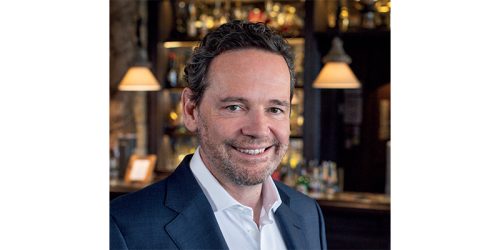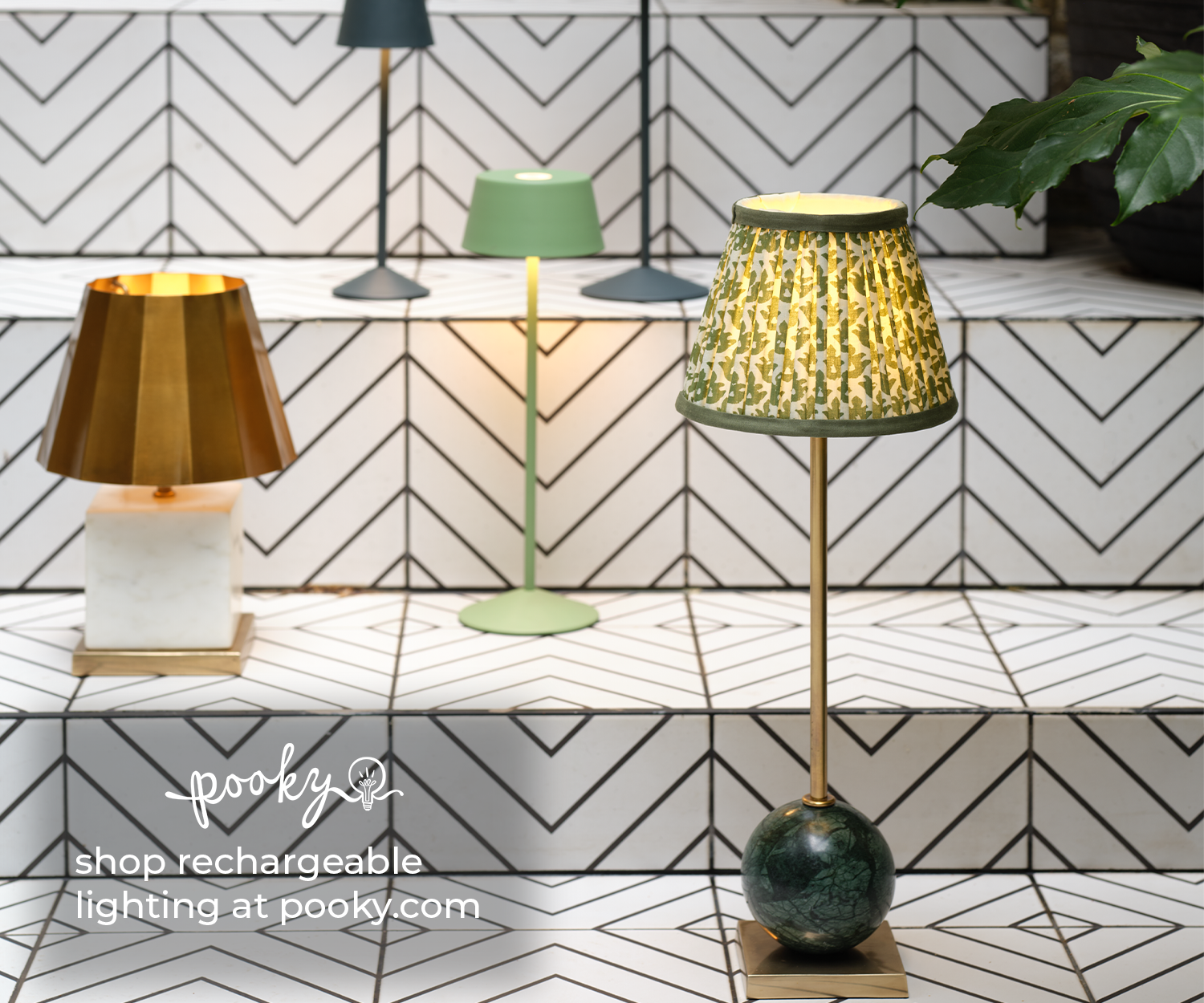KEMPER HYERS, CHIEF CREATIVE OFFICER, AUBERGE RESORTS COLLECTION
At the helm of all things creative for the quietly flourishing hotel group, Kemper Hyers explains how localised luxury builds the basis of Auberge Resorts Collection
You might have heard about The Lodge at Blue Sky in Utah for its female-led regenerative farm, the unrivalled sunset views at Grace Santorini, or perhaps the century-old landmark site at Bishop’s Lodge in the foothills of the Sangre de Cristo mountains. You would be forgiven, however, for not realising the thread that connects these hotels is that they’re developed and operated under the finesse of the Auberge Resorts Collection group – and that’s how they like it.
In a hospitality sphere full to the brim with big brand names and distinctive house styles, Auberge goes against the grain, resulting in each property feeling refreshingly independent and entirely attuned to its locale. “In the beginning, we used to argue – ‘why don’t we call that The Auberge Florence, or this The Auberge Santorini’ as it would be so much easier to launch a brand that way because everybody just hears and sees the name over and over and over and over,” tells Kemper Hyers, who oversees the creative direction for Auberge Resorts Collection as Chief Creative Officer.
“But we realised that our customers at the very highest end of luxury no longer wanted something that had brand names all over it,” he continues. “What they wanted was to venture to places that were so one-of-a-kind, felt incredibly special, and connected them to the destination. And so each year, we talked ourselves back out of changing our naming convention and stuck with coming up with names that honoured the way each hotel sits within the land it inhabits, and what initiated us to take on each project in the first place.”
Since joining Auberge in 2017, Hyers has been instrumental in shaping the brand’s non-standards-based, altruistic, storied approach to crafting distinctive luxury hotels, resorts, and residences. Under his influence, the portfolio has expanded from 8 to 27 properties. While he modestly describes his role as that of a creative compass, guiding and inspiring the design narrative of each property, he emphasises the collaborative nature of creativity. Together with his tight-knit team and the talented designers they collaborate with, they meticulously explore each location to uncover the nuanced details and layers that truly distinguish each Auberge hotel.
Despite his modesty, the art of navigating the creative compass appears to be an intuitive skill for Hyers, undoubtedly stemming from the extensive experience he has accumulated over the years. Launching his career under the mentorship of household name Martha Stewart, he later went on to work with real-estate mogul Barry Sternlicht as Head of Design at Starwood Capital Group, where he was integral to the creation of new brands 1 Hotels and Baccarat Hotels. Whilst both Starwood and Auberge operate in the luxury hospitality sector, going from a global private equity firm to a small-scale family-owned business represents a shift to opposite ends of the spectrum, seeming like quite the unexpected move.
“Funnily enough, I had decided to go with another role, which was at another large company. I was all set to do it,” he recalls. But a two-and-a-half-hour lunch with Craig Reid, CEO of Auberge Resorts Collection, persuaded him otherwise. Being at the heart of creating bespoke, site-specific hospitality experiences was something that Hyers was missing, and lured his gaze away from the big-hitting far-reaching brands he was used to working with. “When I started to look for my next move, Auberge really spoke to me. The fact that it is a collection of one-of-a-kind hotels, where each property in a way is its own brand, felt right. It felt more artisanal, which was where I wanted to start to camp my career.”
Family-owned and grown, the Auberge group might be a small entity, but staying true to a grounded vision of what luxury hospitality means – despite the way the industry has previously swayed – is how they have built their continuing success. “Once upon a time, there were a lot of collection brands, and nobody knew what to do with them. I think what we’ve proven now is that you can be a collection, and people can still understand who you are,” Hyers says.

Clockwise from top left: Cocina del Mar restaurant at Esperanza in Los Cabos; accomodation at Hacienda AltaGracia in Costa Rica; and The Parlor at Mayflower Inn & Spa in Connecticut
And proven that they have, the accolades scooped up just last year alone verifying as much. For the first ever World’s Best 50 Hotels list, The Lodge at Blue Sky – set among 3,500 acres of lush, untamed Utah landscape – took home both the Art of Hospitality award and the Lavazza One to Watch accolade. Before the year was out, Auberge also proved its worth when the Conde Nast Traveller Readers’ Choice awards results came in, with all 22 eligible properties recognised, five of which were lauded as the best resorts and hotels in the world. Rounding things off, of the luxury hotel brands included on the lists, Auberge claimed the highest percentage of hotels and resorts recognised.
In achieving such consistent success, where no property seems to detract from the portfolio’s overall performance, one might be inclined to wonder at what point individuality is compromised to maintain the evidently effective brand standards. “We have only five standards,” Hyers answers surprisingly. “They are the mattress, the pillows, the sheets, the towels, and the hairdryer – and that’s only because I’ve used a hairdryer since 1972, so we have to have a really great hairdryer,” he jokes. Seriously speaking, it appears that the fundamental brand standard is, in fact, the preservation of the uncompromising individuality of each property. While each resort benefits from the infrastructure and strategic vision of the Auberge group, a singular approach is taken for each property’s aesthetic and amenities, designed to be sympathetic to its surroundings and local culture.
“They each have their own DNA, then they’re linked together by what is ‘Auberge’ – and I think that’s the magic of the collection,” he says. “In terms of my work, each project means generating these mini brands all the time,” a skill that Hyers seems to have mastered, but attributes to each Auberge owner. “I always say the best brands come from real people. They don’t, and they aren’t, invented in marketing or conference rooms. They come from a real person with a real idea, a real feeling, and a real vision of what they want to do. To be an owner of an Auberge, you’re not somebody who’s just coming in to take a formula, execute it quickly and get it out in the market. You’re building a 70 room, 100 room, 150 room hotel, because you’re on a mission, and you have a huge belief about this place and why you’re doing it. And when I say we create a brand for each hotel, often, it begins with the owner’s original vision.” Continuing he adds, “This commitment to the ‘one-of-a-kind’ that we’ve made, that has to be created in real-time, together, between owner, designer, and Auberge – those three legs of that stool have to be working together the whole time.”
From one Auberge hotel to another, guests could be staying at a 13th-century French Chateau built more than 700 years ago by the knights of Chasteignier de la Roche-Posay, or an iconic Spanish Revival-style building in the heart of San Francisco that was once the centre of a newspaper empire. With such varied destinations and properties, Hyers describes seeking out wherever is next as an unscripted and intuitive process. “When we talk about ourselves as a collection, I like to think of us and the owners as the collectors. A collection isn’t curated by writing a wish list and ticking off boxes – for us, it’s instinctual and heartfelt,” he says. “A lot of hotels we walk into, we’ll know right away – not for us. A lot of plans we get through that say ‘This is what I’m building’ – not for us. Because it doesn’t fit an instinctual criteria. And that criteria is that it must feel intimate – which doesn’t mean it has to be five rooms, but it must feel intimate. It must be an incredible evocation of the place – it must be synonymous with the location, it can’t be divorced from it. And it should have that sense of luxury, which to us is that sense of individuality.”
Auberge has been busy putting its instinctual way of finding hotels to good use, currently focusing on a considered portfolio expansion. With currently 27 resorts across three continents, the group will add a further 14, with five locations slated to open before 2026. With a large percentage of the resorts and hotels on US soil, Auberge Resorts Collection has its sights set on Europe. Having recently acquired Domaine des Etangs in France last year, Collegio alla Querce, an exquisite cluster of reimagined 16th-century UNESCO buildings once serving as a cultural institution, preparatory school, chapel, and theatre in Florence is next to look forward to, debuting in spring this year.













